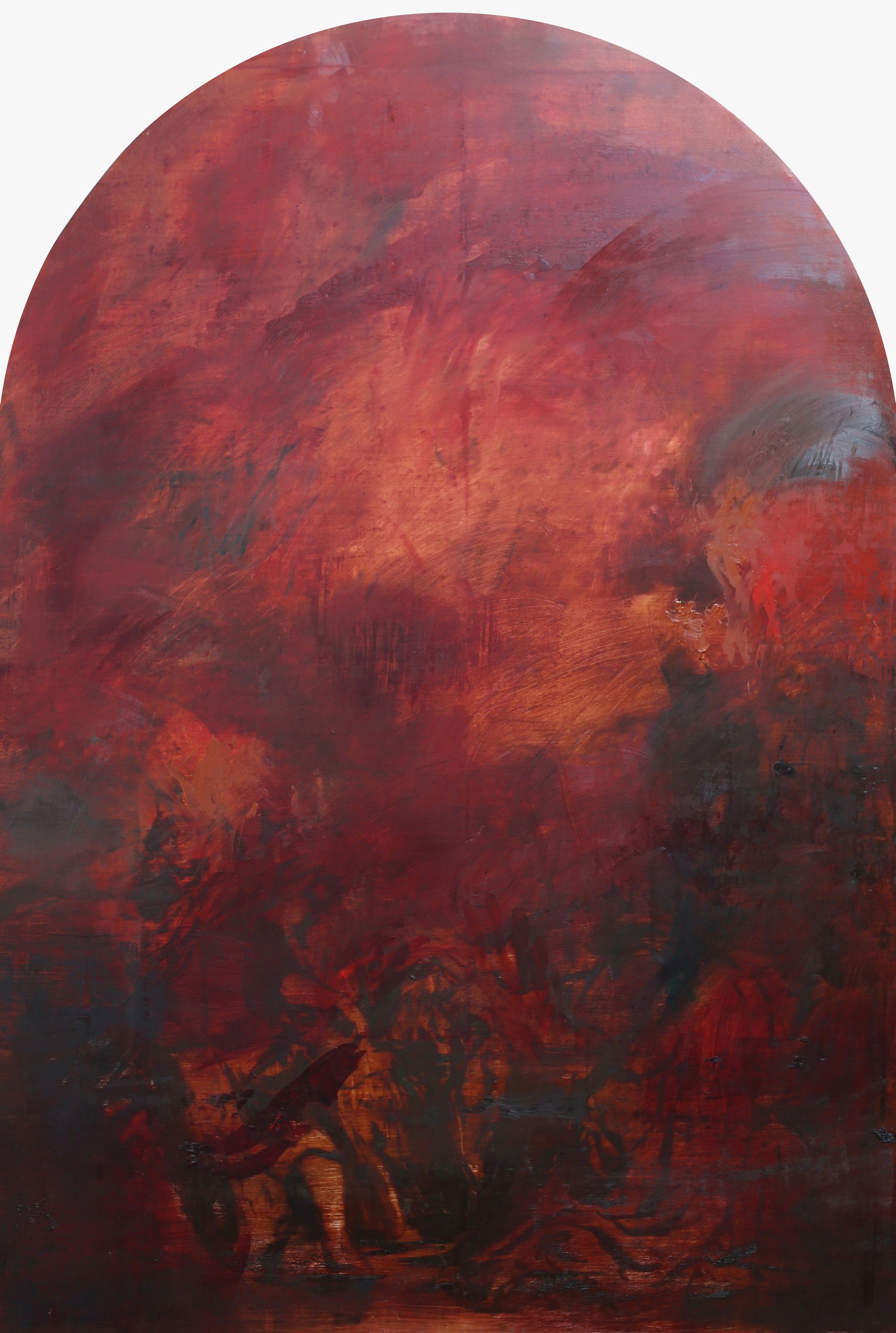
In January of this year, we welcomed a new body of work from leading British artist Jake Wood-Evans to the Gallery in Winchester Discovery Centre, working in collaboration with gallery, Unit London. Wood-Evans lives and works in Hastings, and as well as exhibiting at art fairs internationally, his work has been shown in galleries both in London and across the UK and can also be found in private collections around the world.
For Relic, Wood-Evans created more than 20 new works, including 16 large-scale paintings that explore his enduring themes of mortality and history. Recalling the great masterpieces of Baroque art, from Rubens to Van Dyke, Wood-Evans paintings fuse the great Romantic tradition of painting with the modernist sensibility of abstract artists such as Rothko and Motherwell. Wood-Evans brings to his art a subtle understanding of the passage of time, expressed in his appropriation of existing historic portraits, which he re-works through a process including cropping, erasure and over-painting.
Enjoy part one of our virtual Relic exhibition, which explores Wood-Evans’ five different treatments of Rubens’ The Assumption of the Virgin Mary, you’ll find a link below to view the inspiration behind Wood-Evans’ new paintings. If you would like to see more now, you can view the full body of work displayed in Relic in the exhibition catalogue.
Beautiful, emotive paintings. An interesting and new perspective on the Old Masters. Gallery visitor
Wood-Evans created five works for Relic taking The Assumption of the Virgin Mary (1626) by Peter Paul Rubens as its starting point. Rubens’ Assumption is an altarpiece in the Cathedral of Our Lady, Antwerp. The work depicts the Virgin Mary being lifted in a spiralling motion by a choir of angels, towards a burst of divine light. The 12 apostles are gathered around her earthly tomb, gesticulating wildly.
Study for The Assumption, with Oxide Red, after Rubens, 2019
In Wood-Evans’ oxide red interpretation, the focus shifts to the bottom of the composition. The apostles, whilst still not rendered in detail, have a more established pictorial presence.

The Assumption, with Prussian Blue, after Rubens, 2019
In this Prussian blue interpretation, the artist has taken the Virgin Mary’s blue shroud and transferred the colour to the top half of the piece, as if she’s of the same essence as the heavens.

The Assumption with Alizarin Crimson, after Rubens, 2019
In Wood-Evans’ alizarin crimson interpretation, the Virgin Mary’s space is inhabited by a swirl of light while the outlines of the apostles are drawn with heavy lines, but remain obscured.

The Assumption of the Virgin Mary, after Rubens, 2019
In this, the darkest of Wood-Evans’ Assumption interpretations, the forms are barely visible amidst a maelstrom of blacks and blues, reminiscent of a tempestuous night sky.

Study for The Assumption of the Virgin Mary, with Cadmium Red, after Rubens, 2019
This is the lightest of Wood Evan’s responses to Rubens’ Assumption, where his version of the original piece is least obscured. The result is a vibrant painting, bouts of cadmium red seem to burst through a darker background, like sunlight through storm-clouds.

If you have enjoyed Culture on Call and you are able to make a donation, any support you can give will help us keep people connected.



